Santiago de Cuba Echoes of the "Timbalaye" 2025
especiales

It will be very difficult for the national organizers of the International "Timbalaye" Rumba Festival not to include Santiago de Cuba among the provinces chosen as the next national host for the celebration.
This assertion is due to the events of the Timbalaye festival that took place in the city, cradle of the bolero and son, on August 27th and 28th.
The depth of the theoretical interventions by leading specialists and researchers, the artistic presentations featuring premier folkloric ensembles, the presence of an enthusiastic rumba-loving public of all ages across different venues, and finally, a special closing ceremony around the ceiba tree in the quintessentially Santiagueran neighborhood of Tivolí, have paved a very positive path for the next national rumba festival to be held in Santiago de Cuba.
Alongside Son and Bolero… Rumba
This southeastern city, the cradle of the bolero and son, of the most formidable polyphonic choirs, of the most rhythmic and sonorous congas, and of the only nationally significant Carnival, is also a land of good rumba. Fortunately, for three years now, this Creative City of Music has hosted the Timbalaye.
For two days, August 27th and 28th, the city hosted a distinctly Santiagueran version of "Timbalaye," this time dedicated to "Ancestral Voices" and the Siguaraya tree, under the general slogan "¡Hay un congo, cará!" (There's a congo, face!).
At the Fernando Ortiz African Cultural Center (Ccafo) in Vista Alegre, they delved into how rumba is part of Cuban identity. The inaugural activities included a keynote lecture by M.Sc. Zoe Cremé Ramos, director of the Ccafo, on the Conga community in Santiago de Cuba.
The Merit Researcher of the Casa del Caribe, Abelardo Larduet Luaces, addressed the topic "Folkloric dance in Cuba. A before and after Antonio (Tony) Pérez." Pérez is a pivotal figure in Cuban folklore of African roots. To the delight of participants and organizers, Tony attended and spoke.
Larduet Luaces is satisfied because Timbalaye is an event that allows for the promotion of the true roots of our traditional popular culture—the culture that prevails in the neighborhoods and among the simplest people.
Abelardo highlighted that in some countries, the word folklore was denigrated, especially where it was sustained by slave labor. But how special folklore is when we know it is synonymous with traditional popular culture. Therefore, Larduet praised Tony Pérez for shifting the general concept of folklore.
As in Cuba, folklore in other countries was largely sustained by the Black presence, by slaves. So the high bourgeoisie always saw folklore as something subordinate. However, according to Abelardo, all artistic projections anywhere in the world are born from folklore, which is the people. Because folklore is a compound word, originating in England, meaning "people" and "knowledge"—the knowledge of the people.
Cuban folklore, and within it Santiagueran folklore, thus gains greater relevance because Cuba becomes the capital of the Caribbean. This has strengthened Cuban culture with the ebb and flow of cultures from all the Caribbean islands, hence the influences from Haiti, Jamaica, and other sites in the region, and the reflection of folklore even in economic, political, and social aspects.
And at a proper "Timbalaye," as always happens in Santiago de Cuba, the "culinary touch" was not missing: nearly twenty typical dishes of Afro-Cuban cuisine were brought to the "Fernando Ortiz" by the Culinary Association, led by its president, Ángel Smith; professors Lorenzo Ruiz Coca and Juan Carlos Díaz Hernández; and students of the specialty.
It's a pity it was only a two-day festival. On Thursday morning, groups were already in the city parks with the best rumba. In the afternoon, from around 4:00 p.m. until the ceiba tree in Tivolí, first children's groups from the neighborhood performed, then it was the adults' turn. To name a few: the Kokoyé Folkloric Company, Obinni Irawo, Rumberos de Hoy, Berta Armiñán, Inyalá, Lorenzo Jardines—who gave a talk on the importance of the ceiba and its deities—the group directed by maestro Márquez, the Paso Franco conga…
The Carabalí Olugo Cabildo, both the children's and adult versions, prepared a tribute to the memory of Benito Ramírez Soularí, their leader for over 40 years, who recently passed away.
And the Siguaraya?
Work had been underway since last June to organize the Santiagueran Timbalaye. The technical advisory team, after meeting here, determined that the Siguaraya plant can only be found in the mountains, far from the city center. Therefore, an alternative was sought to represent Santiago de Cuba: the ceiba tree growing in a small park-like area in the center of Santa Rita street, between Padre Pico and Callejón Santiago, in the heart of the Tivolí neighborhood.
All of this was explained and detailed by Isabel Rodríguez Elías, "Chabela," the methodology specialist for intangible heritage.
Leonel Mendoza Luna, deputy director of the Provincial Center for Casas de Cultura, referred to the effort to fill the Serrano, Dolores, and Céspedes parks with rumba, and the performances of Folkloyumas, Kazumbi, and Los Tambores de Enrique Bonne; the meticulous attention provided by the Miguel Matamoros Music Enterprise and the Performing Arts to the "Timbalaye"; and how the celebration was also programmed for San Luis, with Bantú Yoruba; Palma Soriano, with Ireme Imecongó; and Voces del Milagro and the Cimarrón Cabildo, in El Cobre.
Between Heaven and Earth… The Ceiba
The masters Yoilan Maceo Cabrera, director of the Kokoyé Folkloric Company, and Juan Teodoro Florentino, folklore specialist, offered their views on Timbalaye.
Teodoro: "As Santiaguerans, the first thing we must do is 'ground' ourselves in the community culture, which is what the Festival rests on." He suggested that rumberos remember that before beginning a yambú, a guaguancó, or a columbia, they should use the experience of the Congos and the traditional greeting: "Nsala malekum," with its response: "Malekum nsala," and the intercalated music of the Timbalaye.
He added that the artistic direction should reflect "the things we have from the Congos, and the things the community has, based on this Timbalaye project. And be careful when showing the Conga elements our city has. And ensure no one feels left out. In short, it's not just about showing the rumba; Santiago de Cuba has a potential characteristic of the Congos."
Yoilán said that much has been done in Santiago de Cuba to strengthen and maintain the African legacy within dance and musical manifestations; that the Timbalaye project here is in full development. He praised Professor Ulises Mora, founder of Timbalaye, for dedicating the festival each year to a specific manifestation, root, or culture of African substrate.
"And the other very important thing is that Tivolí was chosen for the history of the neighborhood in the construction of 'Cuban-ness.' And even more so to hold it around the ceiba tree for what it represents."
The ceiba, an ancestral tree, is the only one—independent of the Siguaraya—that pays tribute to all the ancestors who are under the earth and likewise to the ancestors who live above the earth. In religions of African roots, the ceiba is a sacred symbol… it represents the connection between the spiritual and material worlds… its branches extend towards the sky and its roots towards the underworld… In the ancestral worldview, the ceiba symbolizes communication between heaven and earth… it establishes an axis that holds up the universe… The ceiba is venerated for its capacity for renewal and its importance in the spirituality of various African cultures.
The "Mercerón Center" and the Rumba
Ludmila Mercerón Trenard, leader of the Mercerón Center Cultural Project in Tivolí, hosted the initial organizational stage of the Santiagueran Timbalaye there. There is general gratitude, and she said:
"The 'Mercerón Center' has only joined a great family that has been defending traditional popular culture for a long time with very hard work; we opened our doors and provided not only the space but also the desire of the neighborhood for the youth to be part of these projects, and for them and the children in the community to live proud of being from Tivolí."
As African as it is Cuban
In Cuba, rumba is a musical mix of song and dance; its roots are as African as they are Cuban. Since its origin, it was a typical dance, and today they affirm it is the most classic of Latin American dances.
Since November 2016, Cuban rumba is an Intangible Cultural Heritage of Humanity; it is, moreover, a musical genre of Afro-Cuban song and dance.
It was born where the Black and humble population predominated, from the 18th century onward. It is impossible to separate rumba from the dances and songs of the African slaves brought to Cuba. However, some assert that the initial protagonists were free Blacks and their descendants (Lucumí, Ganga, Arará, Gangá-Bantú) in barracks, crews(?), fields, suburban areas: bateyes and villages near sugar mills.
Brief Notes from a Rumba Party
The Timbalaye Festival is sponsored by the National Council of Casas de Cultura. In some provinces, it is held virtually; in others, it is in-person (activities of national reach), as this year in Havana, Mayabeque, Artemisa, Villa Clara, and Matanzas.
Virtually, because they have the support of the local telecenters, for example, in Santiago de Cuba, Camagüey, Holguín, Sancti Spíritus, Las Tunas, Granma, Guantánamo.
Since early August, Timbalaye activities have been taking place in many provinces.
The Festival has been held in Santiago de Cuba for three years: the first time was organized between the Casa del Caribe, the Miguel Matamoros Municipal Culture House, and the Nuevo Vista Alegre district; the second was at the Tumba Francesa La Caridad de Oriente; and now, the third time, in the Tivolí neighborhood, with the support of the "Mercerón Center."
The work of the Technical Advisory Council for Popular Culture at the Provincial Center of Casas de Cultura is dedicated; also, the work of masters Yoilán, Teodoro, Mapuli, Alarcón, Ramón Márquez; the dance methodologies of the Casas de Cultura; of Juana Victoria Caignet and Yanelis; and the Santiago branch of the Culinary Association of Cuba.
"If we consolidate this great team, the next Timbalaye will be unforgettable, because there is much intelligence and desire to help in order to celebrate the festival of rumba," said Chabela.


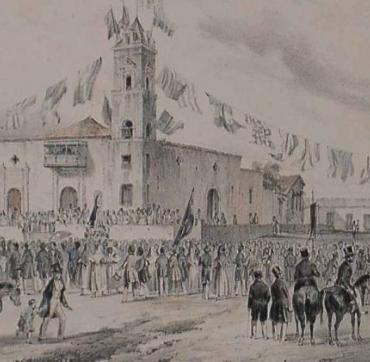
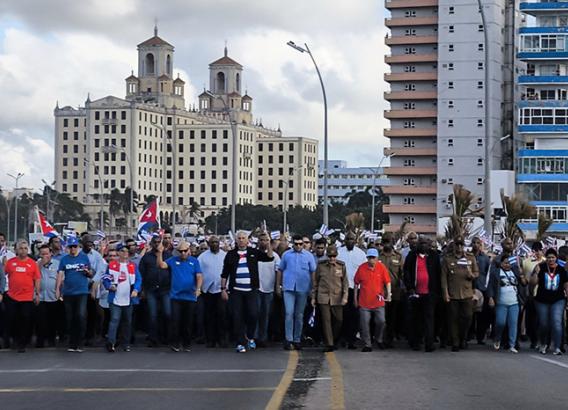
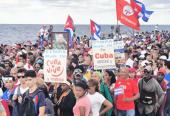

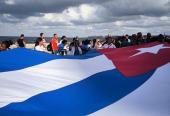
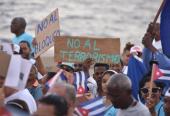
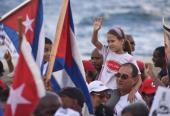
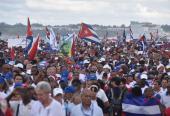


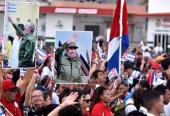

Add new comment